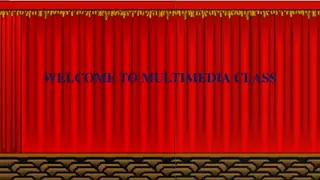
Effective Strategies for Academic Publishing Success
Gain valuable insights and practical advice from Dr. Murray Sherk on achieving publishing success in academia. Learn about the importance of academic contributions, principles for good writing, and how to avoid common fallacies in research writing. Enhance your skills with tools like MS Word and Grammarly to elevate your research papers to the next level. Stay updated with attendance requirements and weekly reports to excel in the course.
Download Presentation

Please find below an Image/Link to download the presentation.
The content on the website is provided AS IS for your information and personal use only. It may not be sold, licensed, or shared on other websites without obtaining consent from the author. If you encounter any issues during the download, it is possible that the publisher has removed the file from their server.
You are allowed to download the files provided on this website for personal or commercial use, subject to the condition that they are used lawfully. All files are the property of their respective owners.
The content on the website is provided AS IS for your information and personal use only. It may not be sold, licensed, or shared on other websites without obtaining consent from the author.
E N D
Presentation Transcript
Publishing English Lesson 3 USTC School of Management Spring 2019 Teacher: Dr. Murray Sherk Course Website: http://staff.ustc.edu.cn/~msherk (Click on the Publishing English link.)
Reminder: Attendance and Weekly Reports Attendance is required in this course. SoM says: Miss >1/3 = fail You lose some for each absence or late arrival. Weekly report of your hour of work on class project is required. Each worth 1.5%
Lesson 3 Outline Review of Lesson 2 What makes a good paper good? Advice from an experienced and successful research writer Examining model papers Principles for good writing Tools of the trade: Finish tour of MS Word, Grammarly
Review of Lesson 2 Fallacies and how to avoid them 10 Common Logical Fallacies: Ad Hominem, Amphiboly, Appeal to Pity, Checking for fallacies is a type of proofreading What makes a good paper? Views: Editor s, Reviewer s, Reader s Tools of the trade: Tour of MS Word Article: The Science of Scientific Writing
Homework of Lesson 2 Grasp main ideas of SSW article Choose and bring to Lesson 3 a model paper (hardcopy or electronic) Register for Grammarly Play with MS Word 100-word weekly report
Lesson 3 Outline Review of Lesson 2 What makes a good paper? Advice from an experienced and successful research writer Examining model papers Principles for good writing Tools of the trade: Finish tour of MS Word, Grammarly
Advice from Exec. Dean Yu Yugang Academic contributions are the most important ingredient for publishing success Interesting types of contributions: counterintuitive findings where common sense is misleading generalization wider application to different cases, including about limits of where techniques work
Advice from Yu Yugang Theory is better than examples. Case studies, surveys, etc. are good but a general theoretical proof is better Theorems are better than observations
3 General Advice Points from Yu Yugang Highlight your contributions As you write your paper, make a research question list, then choose the best question for your next paper. Make friends with peers Discuss results, borrow ideas, get them to assess the quality of your ideas
Advice about reviewers from Yu Yugang Referees are always correct (!?!?) At least, their comments are always useful From their point of view, their comments are true. If you think those comments are wrong, that tells you that your presentation was not good enough for an expert to understand Rewrite!
Lesson 3 Outline Review of Lesson 2 What makes a good paper? Advice from an experienced and successful research writer Examining model papers Principles for good writing Tools of the trade: Finish tour of MS Word, Grammarly
Your homework from last week Bring a model paper from a top-level journal in your research area. A paper you wish YOU had written Take that paper out now If you do not have a paper with you, go online and find one quickly.
Randomized Groups of 3 Sit with your triple. You have 45-60 minutes. See Questions about a model paper handout or on website You (the triple) may do the questions in any order you choose. Discuss these answers together, comparing your 3 papers. In what ways are your papers different? In what ways are they the same?
The point of analyzing model papers Even between model papers, there are significant differences in writing style. There is no magic formula for success. But there are ways to guarantee failure! Check the journal. Find out what each journal prefers or requires. Being concise and clear always helps.
Lesson 3 Outline Review of Lesson 2 What makes a good paper? Advice from an experienced and successful research writer Examining model papers Principles for good writing Tools of the trade: Finish tour of MS Word, Grammarly
Some principles for good writing From your homework reading article: The Science of Scientific Writing (SSW) by Gopen and Swan If the reader is to grasp what the writer means, the writer must understand what the reader needs.
SSW Principles of Writing 1. Follow a grammatical subject as soon as possible with its verb. 2. Place in the stress position the "new information" you want the reader to emphasize. 3. Place the person or thing whose "story" a sentence is telling at the beginning of the sentence, in the topic position. 4. Place appropriate "old information" (material already stated in the discourse) in the topic position for linkage backward and contextualization forward.
SSW Principles of Writing 5. Articulate the action of every clause or sentence in its verb. 6. Usually, provide context for your reader before asking that reader to consider anything new. 7. Usually, try to ensure that the relative emphases of the substance coincide with the relative expectations for emphasis raised by the structure.
Checklists Give a plan for doing something Helps to get started Make sure you do not miss anything important
SSW Principles of Writing 1. 2. Follow a grammatical subject as soon as possible with its verb. Place in the stress position the "new information" you want the reader to emphasize. Place the person or thing whose "story" a sentence is telling at the beginning of the sentence, in the topic position. Place appropriate "old information" (material already stated in the discourse) in the topic position for linkage backward and contextualization forward. Articulate the action of every clause or sentence in its verb. Usually, provide context for your reader before asking that reader to consider anything new. Usually, try to ensure that the relative emphases of the substance coincide with the relative expectations for emphasis raised by the structure. Idea: Put these into a checklist for your writing! (you may want to reword them) 3. 4. 5. 6. 7.
More principles for good writing See course website page: Principles for Good Writing (We ll be covering all the things in this list eventually, so do not try to absorb them all right now.)
Principles for good writing From Style: The Basics of Clarity and Grace (BCG) by Williams and Bizup Murray s summary of BCG: We write badly when we try to sound too scholarly.
BCG Example 1 and SSW principles 1a. The cause of our schools failure at teaching basic skills is not understanding the influence of cultural background on learning. 1b. Our schools have failed to teach basic skills because they do not understand how cultural background influences the way a child learns. [SSW3] Place the person or thing whose "story" a sentence is telling at the beginning of the sentence, in the topic position. [SSW5] Articulate the action of every clause or sentence in its verb. (i.e. put lots of information in verbs)
BCG Ex.1 and BCG principles 1a. The cause of our schools failure at teaching basic skills is not understanding the influence of cultural background on learning. 1b. Our schools have failed to teach basic skills because they do not understand how cultural background influences the way a child learns. [BCG1] Principle 1: Make Main Characters Subjects [BCG2] Principle 2: Make Important Actions Verbs A sentence seems clear when its important actions are in verbs (not nouns). Do not not try to sound scholarly by making verbs into nouns.
Do I do that? We make a comparison of X and Y. We compare X and Y. This technique is an extension of Burke s method. This technique extends Burke s method. The effect of X on Y is positive and significant. X affects Y positively and significantly.
BCG Example 2 and nominalizations The outsourcing of high-tech work to Asia by corporations means the loss of jobs for many middle-class American workers. Nominalizations = when a verb is used in a noun form. Both SSW & BCG say we should put information in verbs, so nominalization is a bad idea! Where do you see nominalizations above? We want to turn them [back] into verbs!
BCG Ex.2: Main characters and actions The outsourcing of high-tech work to Asia by corporations means the loss of jobs for many middle-class American workers. What/who are the main characters? corporations, workers What do the characters do or have done to them? outsourcing outsource. Corporations outsource loss lose. Workers lose
BCG Ex.2: Edited version The outsourcing of high-tech work to Asia by corporations means the loss of jobs for many middle-class American workers. Main characters: corporations, workers Nominalizations: outsourcing outsource. Corporations outsource loss lose. Workers lose Many middle-class American workers are losing their jobs because corporations are outsourcing their high-tech work to Asia.
We will cover other principles later, but for now let s work with these [SSW3] Place the person or thing whose "story" a sentence is telling at the beginning of the sentence, in the topic position. [SSW5] Articulate the action of every clause or sentence in its verb. [BCG1] Make main characters subjects. [BCG2] Make important actions verbs.
(Exam question?) Fix this sentence. Last week, as the teaching of a lesson was taking place on the part of Murray, a cessation of internet access occurred, causing an implementation of alternative activity execution. [SSW3] Place the person or thing whose "story" a sentence is telling at the beginning of the sentence, in the topic position. [SSW5] Articulate the action of every clause or sentence in its verb. [BCG1] Make main characters subjects. [BCG2] Make important actions verbs.
(Exam question?) Fix this sentence. Last week, as the teaching of a lesson was taking place on the part of Murray, a cessation of internet access occurred, causing an implementation of alternative activity execution. Last week, Murray was teaching a lesson when internet access failed, so he did the activities differently.
Definition: obfuscate To make something unclear, complicated, obscure, or unintelligible.
Just for fun: Obfuscate this sentence (I.e. Take what is simple and clear, and make it complex and hard to understand.) Our stove was broken so we went out to eat.
Actual Exam Question from 2017 The undeniable fact that domestic firms wanting to expand to various other countries should find some established larger local partners who can be original equipment manufacturers in the other countries must not be ignored. [SSW3] Place the person or thing whose "story" a sentence is telling at the beginning of the sentence, in the topic position. [SSW5] Articulate the action of every clause or sentence in its verb. [BCG1] Make main characters subjects. [BCG2] Make important actions verbs.
Lesson 3 Outline Review of Lesson 2 What makes a good paper? Advice from an experienced and successful research writer Examining model papers Principles for good writing Tools of the trade: Finish tour of MS Word, Grammarly
Continuing our tour of MS Word Recall: As professional writers, we need to invest time to understand our writing tools and make full use of them. One tool that can be added to Word is Grammarly.
Grammarly Test Go to the course website and click on the Grammarly test document . Open the downloaded document in Word. Enable Grammarly to check the document. What does Grammarly correctly catch? What mistakes does Grammarly miss? When does Grammarly suggest the wrong thing?
Words Spelling & Grammar Checker Now note Word s spelling and grammar checker results for the same document. What does it catch that Grammarly didn t? What does it miss? Strange: You may have to tell Word NOT to ignore problems to get it to check everything! Review tab / Language / Set proofing language -- Make sure Do not check does not have a checkmark
Homework: Read the short article at matt.might.net/articles/successful-phd- students Come prepared to discuss this next week. You might want to follow some of Dr. Might's links for interest. Run Grammarly on some of your own writing. (You could do this as part of your project work hour.) Where is Grammarly correct? Where is it wrong? (False positive or missed mistake) Come prepared to show examples to a classmate next week. As you must do every week, email a 100-word report to Murray about what you did in your scheduled hour of work on your course project.






















